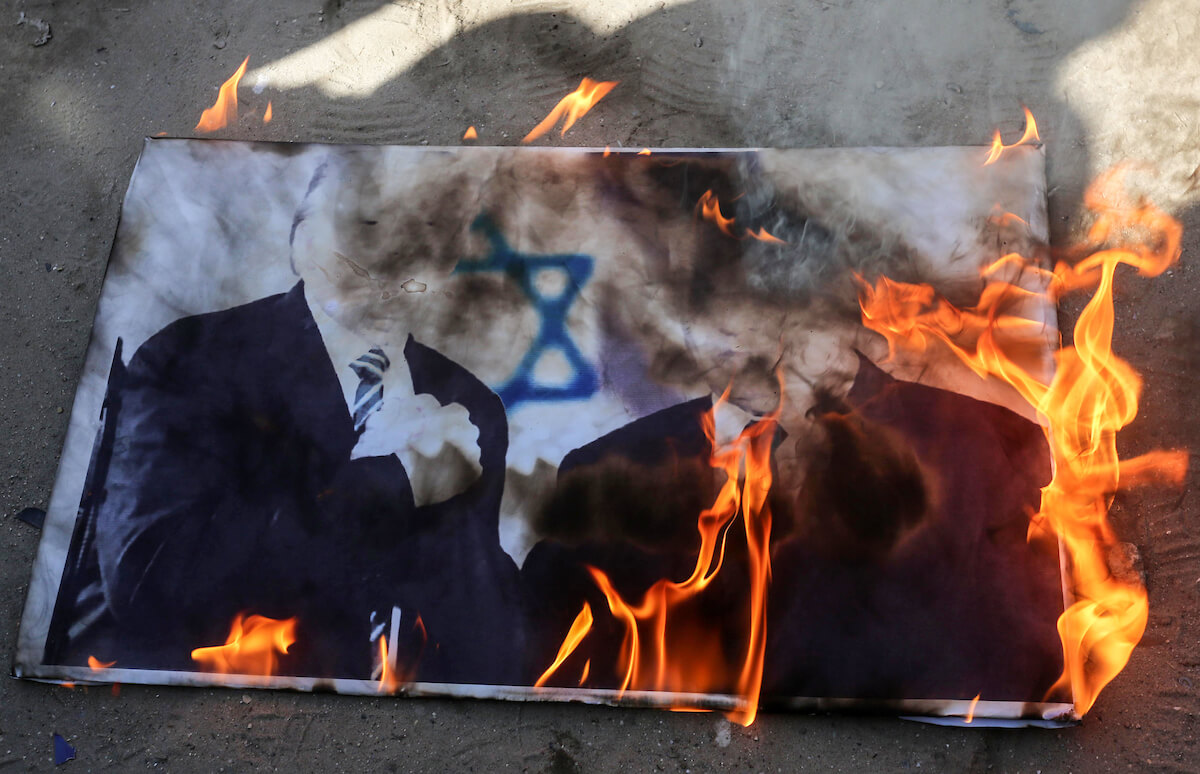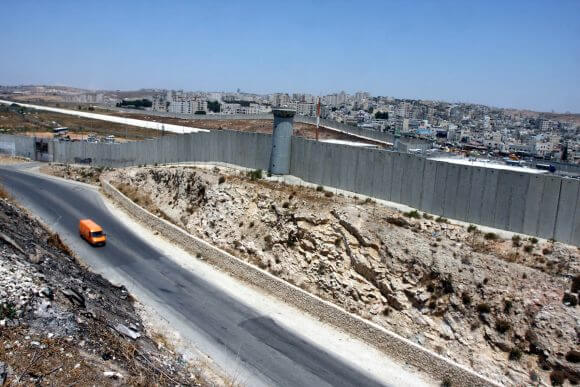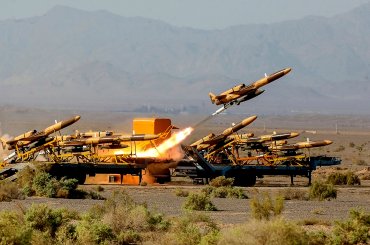It has been one week since the Trump administration announced the “Deal of the Century”, a plan ostensibly meant to devise a formula for brokering a just and sustainable peace between Israel and the Palestinians. The plan, however, has already been rejected by Palestinians, who protested across the occupied West Bank and Gaza, the Arab League, and the UN. The president of the Palestinian Authority, or PA, Mahmoud Abbas, has even threatened to dissolve security coordination with the State of Israel as a result. As the dust settles from the unleashing of the plan, it’s worth examining why it has been met with such hostility.
President Donald Trump’s “Deal of the Century,” much like his presidency, is a morbid joke. Sadly, however, the punchline running centerstage in this theater of the absurd is set to come at the expense of the Palestinians. This is because it is the culmination of an architecture of exclusion that has, for close to a hundred years, denied the Palestinians their agency and undermined their quest for self-determination, justice, and freedom. It treats the Palestinians not as equal partners with legitimate national rights and aspirations, but as a defeated party accepting the terms of surrender in the aftermath of a grueling conflict – unarmed, besieged, and left with the indignation of only having the option to accept whatever settlement is superimposed on them by the state of Israel.
At worst, the deal outlines the parameters for their submission. At best, it proposes a deceptively delirious pathway to peace fashioned without consultation from the Palestinian side. It is a plan void of all Palestinian representation, a trap that is meant to present the indigenous Palestinians – namely, as a party fundamentally opposed to peace – but not represent them.
The long-anticipated Middle East peace plan was unveiled last Monday at the White House by the president, who announced the directive with Israeli Prime Minister Benjamin Netanyahu at his side. There, he bragged about every brazen aberration of international law his administration has enacted – from moving the embassy to Jerusalem to recognizing Israel’s sovereignty over the Syrian Golan Heights. The crowd at the event also included, among others, Jared Kushner, the presidential son-in-law-made senior White House advisor and engineer of the so-called plan, conservative pro-Israel members of the U.S. establishment, and diplomatic envoys from Bahrain, Oman, and the United Arab Emirates (UAE) – in summary, everyone except the Palestinian leadership.
This is more than simply symbolic. It is reflective of the irrelevance of the very notion of Palestine and the Palestinians in the eyes of Kushner, Trump, and Netanyahu. While successive generations of American leadership have treated Palestinians with a paradigm of impertinence, so one-sided is the current administration’s sidelining that the asymmetry in the dynamic crafted by this trio’s proposal, deceivingly titled “Peace to Prosperity,” was done without consultation or involvement from the side of the Palestinians.
And it shows. The plan, which virtually calls for the development of a Palestinian proto-state under the control of Israel, meets none of the rights and demands articulated by, and entitled to, the Palestinians, and endorsed by the international community. Instead, the plan offers the people of occupied Palestine an arrangement that depoliticizes their plight and reduces the conflict – particularly the daily perils of living under military rule – to an institution-building project that makes economic development, especially in the form of infrastructural projects driven by external investment, the centerpiece of the initiative.

Palestinian protesters burn pictures depicting President Donald Trump and Israeli Prime Minister Benjamin Netanyahu during a protest against the Trump administration’s peace plan, in Khan Yunis in the southern of Gaza Strip on January 31, 2020. (Photo: Ashraf Amra/APA Images)
Following the Bahrain workshop, the plan calls for $50 billion in economic investment to build tunnels and bridges connecting the various Palestinian communities in the West Bank to one another and to Gaza. It will also give them access to two ports within Israel – Ashdod and Haifa. But Israel will maintain full control of borders, the registry, and essentially all the territory between the Jordan River and the Mediterranean Sea. It effectively gives Israel final say in every aspect of the daily lives of Palestinians – without any assurances to stem Israeli military abuses, settler violence, home demolitions, and settlement expansions – and without the right to vote over a government which ultimately presides over their future. In other words, the plan constitutes an affirmation of apartheid.
Instead of sovereignty, the Palestinians are to receive perpetual occupation, cynically rebranded as statehood. Instead of the right of return for the descendants of those displaced during the nakba, the Palestinians are permitted to resettle 50,000 Palestinian refugees – all of whom are subject to denial by the Israeli government. Instead of a centralized military, the Palestinians are to live in a demilitarized entity comprised of a series of Bantustans. Instead of freedom, the Palestinians are afforded internal autonomy – ostensibly only nominally more than what is granted under the Oslo Accords. However, as Kushner’s conceptual map reminds us, the implementation of the blueprint, conveniently, is subject to “the terms and conditions provided in the Vision for Peace.”
And therein lies the problem: after enduring nearly a century of colonization, dispossession, subjugation, and violence, Trump, Netanyahu, and Kushner have presented the Palestinians with a proto-state, the “terms and conditions” of which were crafted without their input. This plan cements Israel’s sovereignty over the West Bank and Gaza and eternalizes the occupation under the veneer of statehood, legitimizing Israel’s disregard for international law in an attempt to structurally shift the annexation from de facto to de jure, and thus complete the process of land theft that began decades ago.
Occupation and annexation aside, the plan’s cynicism shines a light on what the Palestinian cause is consistently forced to endure. When they aren’t excluded and sidelined, the Palestinians are vilified and demonized. In other words, the Palestinians, to Israeli and American leaders, do not exist except as useful antagonists on which the failing peace process can be blamed and through which they can exonerate themselves of any and all culpability for the violence, bloodshed, and suffering shed on both sides, though Palestinians disproportionately bear the brunt.
When they aren’t enduring military bombardments, the Palestinians are suffering at the perils of Israel’s sophisticated and repressive occupation apparatus. And when they resist – whether through non-violent civil disobedience or through physical force – they are labeled terrorists, rioters, those wishing to see Israel “wiped off the map”, supporters of Hamas, and antisemites. And when people rally behind their cause in order to push for an end to the occupation and a just solution to the conflict, as with the proponents of the global boycott, divestment, and sanctions initiative, they are discredited based on their anti-apartheid activism.
Overcoming this bifurcation – of being either excluded or demonized, invisible or an existential, demographic threat – will require creative thinking on the part of Palestinians everywhere, not least the PA, whose moral and political mandate has long expired. Palestinians must break the chains of this architecture of exclusion – and it starts with pressuring the PA to abandon the outdated and ineffectual peace process that has given Palestinian civilians living under occupation nothing but settlement proliferation, an internally repressive governmental authority, and the ongoing continuation of the nakba. It’s time to pursue alternative methods to obtain peace and justice in Palestine.



http://normanfinkelstein.com/2020/01/31/i-just-read-the-trump-administrations-vision-for-palestine/
“I just read the Trump administration’s ‘Vision’ for Palestine….” by Dr. Norman Finkelstein, Jan. 31/20
“Its essence is that the Palestinian people are retarded, but the US and Israel are prepared to usher them into Civilization. The only caveats are:
“(1) Palestinians must forfeit about half the West Bank–this is called a ‘significant concession’ by Israel and ‘in the spirit of’ UN Resolution 242;
“(2) Until they achieve Civilization–as certified by the US and Israel–Palestinians can’t have a ‘state’; and
“(3) Even were this ‘state’ to eventually materialize, it would not possess any attributes of sovereignty–indeed, Israel would even maintain the right to decide, as in Gaza, whether a ‘dual-use”’item such as cement and medical equipment can be imported by this ‘state.'”
Couldn’t Israel just send all the Palestinians to Liberia? …. oh, wait a minute, that was the attempt to get rid of unwanted African-Americans in the U.S. in the 19th century, sorry, sometimes it’s easy to get all the schemes to get rid of the Other mixed up….
https://www.loc.gov/exhibits/african/afam002.html
Israel cannot kill or drive out more than 6 million Palestinian Christians and Muslims. Neither can it maintain permanent occupation. This just brings the one-state solution that much closer. Justice will be done as every other coloniser has done, the land shared by equal citizens, indigenous and colonisers.
After studying this map … https://brilliantmaps.com/palestine-archipelago/ the question needs to be asked, how many walls will be needed to surround all these fragmented Palestinian Bantustans, sorry prisons?
Trump has no legal or moral right to distribute Israeli-occupied territories to Israel. Trump’s “might makes right” philosophy obviously is highly dangerous to the national security interests of the American people.